In the previous tutorials, the amplifier circuits to boost audio from a single channel were designed. Over the last decade, there is growth in the audiophile. This has brought a revolution in the music industry. Now, people like to hear the high resolution surround music just like a 3D video. A surround sound system is designed to create a sound field like the sound is coming from back, front, left and right sides. It can also create the sound above the listener. The surround sound system is used in cinemas and drama theaters to give a realistic feeling to the audience. An alternative to the surround sound system is stereo audio system. There are basically two sound systems –
1) Mono Sound System- The mono system produces a mono-natural sound which comes from a single channel and is reproduced by a single speaker. Though more number of speakers can be added to play the same audio channel but a copy of the same sound will be played on all the speakers in such system.
2) Stereo Sound System – In the stereo sound system, the stereophonic sound, also known as stereo sound, can be heard by different channels using more than one speaker. Generally by the stereo system, it is meant that there are two independent audio channels which are reproduced by two or more speakers separately. Such a system is widely used in head phones. For designing a stereo sound system there are two channels required as well as the audio source is required which can provide the stereo sound. So that the audio signal from two audio channels could be obtained and the sound can be reproduced at different speakers.
For a stereo sound system, the same number of amplifiers are required as the number of audio channels. In this tutorial, a stereo power audio amplifier will be designed using TDA2822 IC. TDA2822 is a dual power amplifier having two independent amplifier circuits on the same chip. The IC can be used as bridge or stereo audio amplifier. In the circuit designed in this tutorial, the IC is used as stereo power amplifier to boost to audio channels and output audio to two separate speakers.
In the introductory article of this series, various design parameters of the audio amplifier circuits were discussed like Gain, Volume, Skew Rate, Linearity, Bandwidth, Clipping effect, Stability, Efficiency, SNR, Output power, THD and loop grounding. This amplifier circuit will be designed considering the following design parameters –
Gain (Voltage) – 39 dB
Bandwidth – 20 Hz to 20 KHz
Output Power – 1 Watt
The amplifier will be designed to supply audio to two speakers having an impedance of 8 ohms. The circuit will have the following additional features –
– No Clipping Effect
– Stereo Output
The designing of the circuit will be followed by testing of the circuit for the verification of the intended design factors.
Components Required –
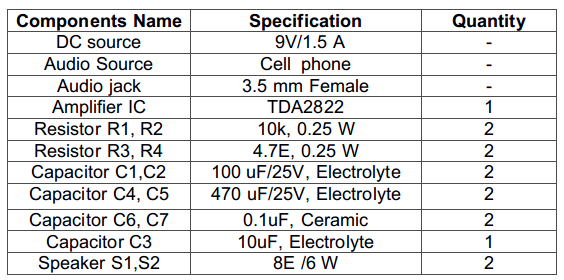
Fig. 1: List of components required for TDA2822H IC based Stereo Power Audio Amplifier
Block Diagram –

Fig. 2: Block Diagram of TDA2822 IC based Stereo Audio Power Amplifier
Circuit Connections –
The amplifier circuit is built by assembling the following components together –
1) DC Source – The amplifier circuit is powered by a battery of 9V and 1.5 A rating. The power supply is passed through a capacitor (Shown as C3 in the circuit diagram) of 10 uF. This is a filtering capacitor to remove any unwanted ripples from the power source.
2) Audio Source – The audio input is provided from a smart phone. For receiving audio from the smart phone, an audio jack of 3.5 mm is plugged into the phone. The 3.5 mm audio jack has three wires – one for ground and two wires for left and right channel. As the amplifier is designed for both channels, both of the channel wires will be connected to the amplifier as audio input. Both the channels are used for applying the stereo sound to the input of the amplifier. The ground wire of the jack will be connected to the common ground of the circuit. Generally, the audio signals on such two channels are out of phase by 180 degrees making the system a balanced audio system.
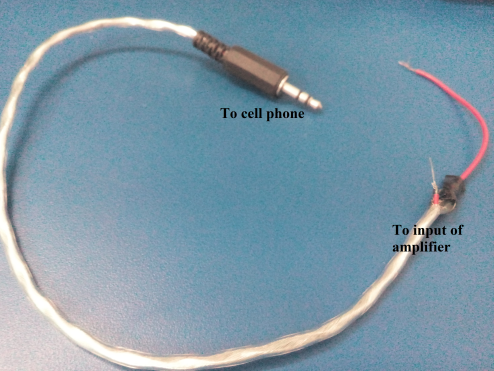
Fig. 3: Typical Image of 3.5 mm Audio Jack
3) TDA2822 Dual Power Amplifier – TDA2822 is a dual power amplifier IC. This IC can operate over a wide range of supply voltages ranging from 3V to 15V. There are two independent operational amplifiers in the IC. This IC has been especially designed for use in portable radios and transistor sets. It is well known for its low crossover distortion and low quiescent current.
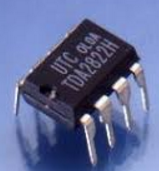
Fig. 4: Typical Image of TDA2822 Dual Power Amplifier IC
The TDA2822 has the following pin configuration –
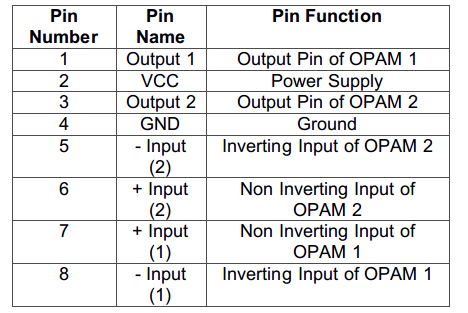
Fig. 5: Table listing pin configuration of TDA2822 Dual Power Amplifier IC
The IC has the following pin diagram –
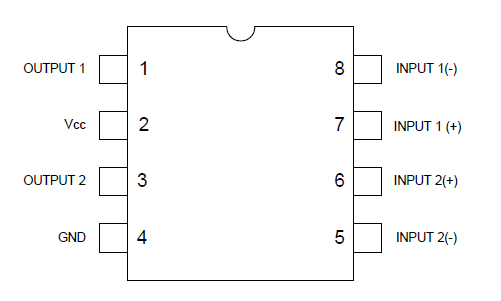
Fig. 6: Pin Diagram of TDA2822 Dual Power Amplifier IC
The IC has the following functional diagram –

Fig. 7: Functional Diagram of TDA2822 Dual Power Amplifier IC
The TDA2822 is used as a stereo power amplifier in the circuit. The IC can provide a closed loop gain of 39 db which is equivalent to a voltage gain of 90. The voltage gain from this dual amplifier IC is not adjustable, as it is internally restricted to 39 dB only.
The left audio channel from the audio jack is connected at the Non Inverting Input of OPAM 1 while the right audio channel from the audio jack is connected at the Non Inverting Input of OPAM 2. The inverting input pins 8 and 5 of the OPAM 1 and 2 are respectively connected to ground through filter capacitor (Shown as C1 and C2 in the circuit diagram respectively) of 100 uF. These capacitors are connected for ripple rejection. The output of OPAM 1 is drawn from pin 1 of the IC which is connected to one of the speakers while the output of OPAM 2 is drawn from pin 3 of the IC which is connected to another speaker. At the output pin, capacitors (Shown as C4 and C5 in the circuit diagram) of 470 uF are connected to block passing of any DC component from the amplifier to the output load. Any DC component from the amplifier to the load which is the speaker in this case can damage it or produce noise or distortion in the output audio. There is a RC circuit (Shown as C6 and R3 in the circuit diagram) connected at the output pin of OPAM 1 and a RC circuit (Shown as C7 and R4 in the circuit diagram) connected at the output pin of OPAM 4. Both these RC circuits are formed by a capacitor of 0.1 uF and a resistor of 4.7 ohms. These RC circuits help in stabilizing the output frequency.
It must be noted that in this circuit TDA2822H is used as TDA2822 IC. There are also other models of TDA2822 available which have different pin configuration and pin diagrams.
4) Speakers – There are two speakers of 10 Watt power rating and 8 ohms impedance used as load at the output of the operational amplifiers. The speakers are connected at pins 1 and 3 of the IC which are the output pins of the TDA2822 and the ground wires of the speakers are connected to the common ground. The 10 Watt speakers instead of 6 Watt are used as per the availability.
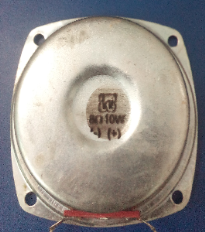
Fig. 8: Typical Image of 10 W 8 Ohms Speaker
The following precautions must be taken care while assembling the circuit –
1. Always use the filtering capacitor at the input terminal of power supply to avoid the unwanted ripples.
2. Use the speaker of equivalent or high power rating as amplifier output power.
3. Always use a series capacitor at the output of the amplifier to block any DC component.
4. Always calculate the maximum power rating of the amplifier before connecting it to the speaker. The practical value may differ from theoretical one.
5. Avoid clipping of the output signal as it may damage the speaker.
6. Always place the components as close as possible to reduce the noise in the circuit.
7. Always follow star topology when grounding, this will keep the noise low and reduce the problem of loop grounding.
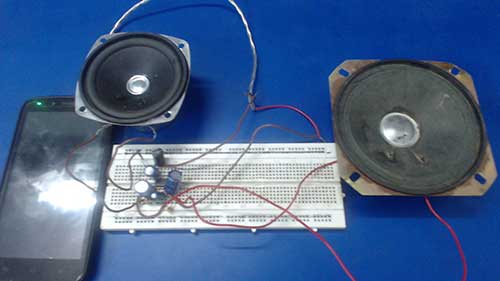
Fig. 9: Prototype of TDA2822 IC based Stereo Audio Power Amplifier
How the circuit works –
For generating a stereo sound from two speakers, the TDA2822 IC is used. The IC is designed to be used as stereo amplifier or bridge amplifier. Internally it consists of two operational amplifiers. For making stereo amplifier, the circuit connections are done as given in the datasheet of TDA2822. The IC can provide a wide range of output power as per the input supply voltage and output load. The power output from the in-built operational amplifiers of the IC has been summarized in the following table –
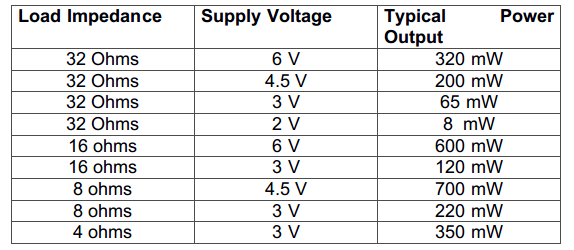
Fig. 10: Table listing power output from in-built operational amplifiers of TDA2822 IC
The power output specified in the above table are tested for 1 KHz frequency as per the datasheet. As the speakers used at the output have 8 ohms impedance and supply voltage of 9 V is provided to the IC, the typical power output of the OPAM should be 1 Watt. The voltage gain is internally set to be 39 dB or 90 which cannot be changed.
The maximum input voltage limit for the IC is fixed so the output power limit cannot be exceeded. On exceeding the power output above 1 Watt, the output signal will start clipping. This will add distortion and noise in the output audio. The root mean square (RMS) voltage at the output can be calculated by the following equation –
Po = (Vrms)2/R
where,
output power, Po = 1 Watt
Load Resistance, R = 8 ohms
So, RMS (root mean square) voltage, Vrms is as follow –
1 = (Vrms)2/8
Vrms = 2.8 V
The audio signal is a sine wave so its peak to peak voltage for 1 Watt power can be calculated as follow –
Vp-p = Vrms*(2)1/2
Vp-p = 2.8*1.414
Vp-p(maximum)= 4 V (approx.)
Since the voltage gain of the IC is fixed to be 90 or 39 dB, the maximum input voltage can be calculated as follow –
Gain = V(p-p)out/Vin(p-p)
Vin(p-p) = 4/90
Vin(p-p) = 45 mV (approx.)
So, the maximum amplitude (voltage level) in the input audio signals should not be greater than 45 mV otherwise, the output signal will start clipping.
Testing the circuit –
For the testing of the amplifier circuit, the function generator is used as the input source. The function generator is used to generate a sine wave of constant amplitude and frequency. Any audio signal is also basically a sine wave so a function generator can be used instead of using a microphone or actual audio source. So, the function generator can be used as input source for testing the audio amplifier circuit. During testing, at the output also, a speaker is not used as a load as the speaker is resistive as well as inductive. At different frequencies, its inductance changes which in turn changes the impedance (R and L combination) of the speaker. So, the use of a speaker as load at the output of the amplifier for deriving its specifications may give false or non-standard results. In place of speaker, a dummy load which is purely resistive is used. As resistance does not change with frequency so it can be considered a reliable load independent of the frequency of the input audio signal.
For testing of the amplifier circuit, first the input voltage is set between the applicable range up to 45 mV. The frequency of the input signal is set to 1 KHz. Then, the output waveform is observed at CRO and the input signal is increased until the output waveform starts clipping.
With dummy load of 10 ohms impedance, the following observations were noted –

Fig. 11: Table listing output characterstics of TDA2822 IC based Stereo Audio Power Amplifier
Ideally, the power output should be 1 watt from the amplifier. Since the load impedance is now 10 ohms, the following power output from the amplifiers must be obtained –
Po = V2(p-p)/2R
Po = (4*4)/(2*10)
Po = 800mW
So, practically the power output of this stereo amplifier for actual load that are the speakers vary between 800 mW to 1 watt. From output waveforms, it was observed that on keeping the input voltage level below 45 mV, there was no clipping effect.
The stereo power amplifier designed in this tutorial can be used in portable cassette players. The circuit can also be used as head phone amplifier for headsets having an impedance of 4 ohms to 32 ohms. In the next tutorial, a pre-amplifier using MAX4468 IC will be designed.
You may also like:
Project Video
Filed Under: Audio, Electronic Projects, Tutorials
Filed Under: Audio, Electronic Projects, Tutorials

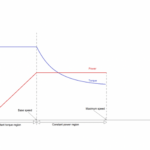
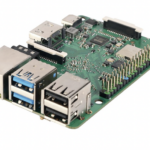

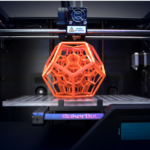
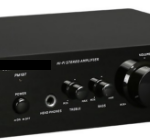


Questions related to this article?
👉Ask and discuss on EDAboard.com and Electro-Tech-Online.com forums.
Tell Us What You Think!!
You must be logged in to post a comment.